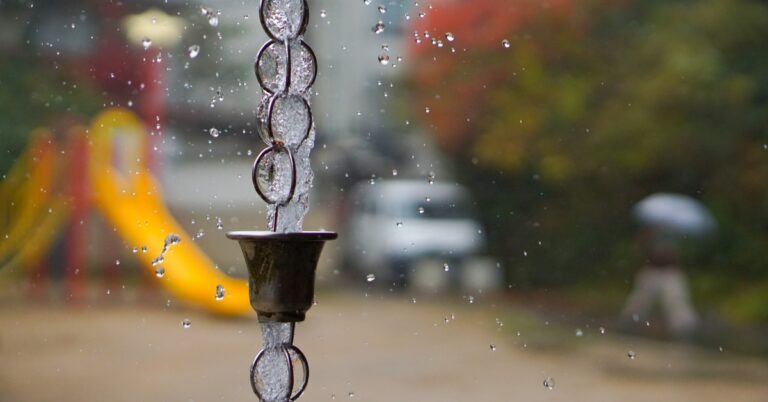They may look like fancy wind chimes, but these chains are silently doing something brilliant. They’re called Japanese rain chains or kusari-doi, and they’re turning rooftops into rain-harvesting marvels.
You may have seen them hanging from eaves if you have visited Kerala, where water gently streams down cup by cup during a downpour. They’re not just placed for aesthetic purposes but to harvest rainwater, thus a step closer to sustainability.
So why chains instead of old pipes?
It is no secret that pipes are practical, but they’re high-maintenance. They get clogged with leaves, breed moss and mold, and are a pain to clean. Ever had a rainwater pipe leak inside your wall? That is no less than a nightmare!
Advertisement
Rain chains solve that. There are no blockages, no rusting from the inside, and no need to break walls to repair anything. Plus, they are stunning to look at. You see the water flow down slowly through a series of metal cups or loops, creating a calm, almost meditative sound, like a mini water chime on your porch. And the slowed-down flow reduces splashing and soil erosion. So, are you ready to witness the charm this monsoon?
Watch the video here.
How do they work?
Japanese rain chains or kusari-doi, are turning rooftops into rain-harvesting marvels.
A rain chain hangs from the hole where a downpipe would normally be. When it rains, water flows from the roof into the gutter, then down the chain. Gravity and surface tension guide the water along the links or cups. At the base, you can direct the flow into a rain barrel, a garden, or even a recharge pit to help replenish groundwater.
A 400-year-old idea with a modern twist
Rain chains have been used in Japan since at least the 17th century, especially in temples and tea houses. They were originally made from bamboo or hemp rope, later evolving into beautifully crafted copper or bronze chains.
So, where can we implement them?
Advertisement
- Bengaluru and Chennai – In homes and eco-projects, where rainwater harvesting is crucial due to water shortages.
- Delhi NCR (including Noida, Gurugram) – With mandatory rainwater systems in new constructions, architects can consider swapping pipes for chains to enhance both form and function.
- Goa and Kerala – Perfect for sloped-roof houses, especially resorts and homestays looking for eco-chic designs.
- Chandigarh and Shimla – Hilly regions where water runoff can cause erosion, rain chains help slow it down naturally.
Rain chains have no blockages, no rusting from the inside, so no need to break walls to repair anything
So, pretty much anywhere with a sloped roof and a gutter system, these rain chains are a perfect blend of traditional sustainability practices with a modern twist. And they’re especially useful in places that get strong monsoons and need to manage water better. So the next time the rain pours, wouldn’t you rather hear a peaceful trickle than a gurgling pipe, and at the same time do your bit to conserve water for the future?

